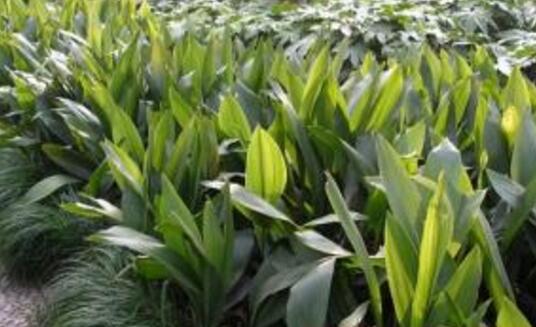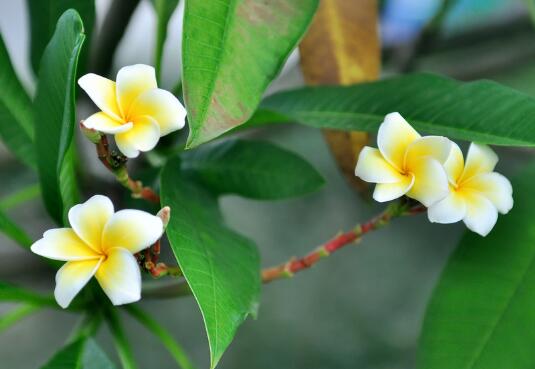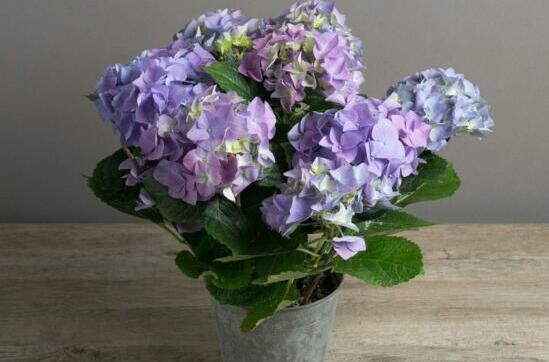What about the yellow tip of an orchid leaf? what about the yellow tip of an orchid leaf / light is the main reason.
One-leaf orchid leaves larger than the palm are green and bright under normal circumstances, but if you don't understand the cultivation methods and precautions of one-leaf orchid, yellow leaves often occur, which not only affects the appearance but also hinders the growth. Let's look at the causes and solutions.
What about yellow leaves?

The leaves of the one-leaf orchid are solitary, green on both sides, wrinkled at the edges, yellow-white spots or stripes may appear on the leaves, which is normal, but if the tip of the one-leaf orchid is yellow or the edge is yellow, attention should be paid to it. The reasons for yellowing the leaves are as follows.
1. Burn
Burns are caused by too strong light, such as sun exposure is one of them, the leaves of one-leaf orchid is more taboo direct sunlight, when it is in the direct sunlight environment for a long time, the leaves will burn, in this case one-leaf orchid leaf tip yellow how to do? The method is as follows.
Solution: When the yellow leaves are more serious, you need to cut off the yellow leaves, and quickly move them to a bright or semi-shady place for maintenance. If they are cultivated in the open field, you can use a shed to shade them.
2. Excessive shade
One-leaf orchid is shade-loving plants, even in the dark basement, it can still be viewed for a long time, but if it is too dark for a long time, not only the new leaves cannot grow, but the old leaves will also turn yellow due to lack of photosynthesis.
Solution: Similar to the solution of burns, one leaf orchid should be placed in a bright place for maintenance. If it must be kept indoors in the dark, sunlight and scattered light should be used to supplement the light.
3. Too much watering (yellow water)
Too much watering will make the soil too moist for a long time, and air cannot enter the soil. It will hinder the respiration of the roots. In severe cases, it will cause the roots to rot, and the old leaves will turn yellow, while the young leaves will become yellowish.
Solution: watering does not have to be too much each time, according to the size of the pot and plant growth reasonable watering, in order to keep the soil slightly moist, the next watering until the soil is dry and then watering is appropriate.
4, airtight
One-leaf orchid is a plant that grows relatively quickly, and when its branches and leaves are too lush, the light transmittance will be poor, and some of the leaves may not receive light, resulting in insufficient light. It should be pruned in time.
Solution: The lush branches and leaves indicate that the leaves grow healthily, but too dense will lead to insufficient light in some leaves, so at the appropriate time, pruning methods should be adopted to cut off the over-dense branches and leaves.
What about yellow leaves?
1. Excessive fertilization
Most parts of the leaves are normal on both sides, but the leaf tips appear yellow, including the tips of the new young leaves. Therefore, it is very likely that there is too much fertilizer, which is what people often call fertilizer damage. Not only the leaf tips may be yellow, but the leaves may also be thick and dull.
Solution: moderate watering, or put the flowerpot in a relatively large water basin for two days, pay attention not to let the water level higher than the flowerpot, let the water enter from the bottom drain hole, and then control the number and amount of fertilization.
2, the temperature is too high
Summer temperature is relatively high, which is difficult to avoid, and when the one-leaf orchid is in a high temperature environment, its young leaves will appear leaf tip and edge withered yellow, seriously affecting the growth of new leaves.
Solution: Put the one-leaf orchid in a well-ventilated and cool place, water it properly, and spray water on the foliage if the air is dry.
What about the yellow leaves? What about the yellow leaves?
One-leaf orchid evergreen all year round, leaf shape straight and tidy, leaf color green light, elegant posture, elegant and elegant, one-leaf orchid is very popular with people a kind of indoor foliage plants, green leaves, wide hypertrophy, just block your palm face! However, if the maintenance is improper, it is easy to yellow the leaves overnight, and the ornamental value is greatly reduced! What about yellow leaves? What about yellow leaves? The following wed114 wedding network Xiaobian brings you detailed content.
What about yellow leaves?
1. The light is too strong
One-leaf orchid has broad leaves, green leaves always give a kind of warmth. This kind of plant is most afraid of direct sunlight. Exposure to sunlight for a short time will burn the leaves and affect the ornamental value. If the green leaves in your home, after a noon sun baptism, into a pile of withered grass, not angry also want to die!
Solution:
You can put the one-leaf orchid in a bright indoor cultivation all the year round, but do not put it in a place with direct sunlight, especially next to the window, and it is not necessary to bask in the sun.
2. Too little light
Plants are sometimes strange and difficult to read. No sun, no shade. Although they are shade tolerant, they can grow for months in a shady environment. But long-term darkness is not conducive to the germination and growth of new leaves, the new leaves grow dull, although not into dead leaves, but the appearance is not very beautiful.
Solution:
One-leaf orchid can be placed in a dark environment, but it is best to move it to a bright environment every once in a while to feel the temperature of the sun, which is more conducive to growth and viewing. Especially in the new leaf growth to maturity of this period of time, try to put in the bright place maintenance.
3. Too much watering
Too much watering is also one of the reasons for the yellowing of the leaves of the one-leaf orchid. The one-leaf orchid likes water, but there is a certain limit. It will not die after several days of drought, but too much watering will affect the respiration of the roots, resulting in yellowing of the leaves. It was like a person who couldn't swim, suddenly thrown into the water, would definitely wither after coming out!
Solution:
One leaf orchid watering should see dry see wet, can not water too much, but also can not be too little, during the growth period need sufficient water, but must ensure that no ponding.
What about yellow leaves?
4. Fertilization is too thick
One-leaf orchid fertilizer demand is not particularly large, fertilization is best to choose light fertilizer, too much fertilizer is easy to cause root burn, destroy the growth of one-leaf orchid, leaves will also turn yellow because of fertilizer damage.
Solution:
Fertilization should not be too frequent, 15 days of application of thin liquid fertilizer, promote the germination and growth of branches and leaves, ensure that the leaves are clean and bright, avoid excessive fertilization.
5. Pest infestation
Indoor maintenance of one-leaf orchid, easy to appear red spider, red spider parasitism in the leaves, absorbing juice will lead to yellow leaves.
Solution:
Always check both sides of the leaves, often wipe the leaves with water to ensure that the leaves are clean and bright. Once red spiders are found, dicofol and nisoro are sprayed in time for prevention and control.
What about yellow leaves?
One reason for yellow leaves: too much light
One-leaf orchid has broad leaves, green leaves always give a kind of warmth. This kind of plant is most afraid of direct sunlight. Exposure to sunlight for a short time will burn the leaves and affect the ornamental value. If the green leaves in your home, after a noon sun baptism, into a pile of withered grass, not angry also want to die!
Solution: You can put the one-leaf orchid in a bright indoor cultivation all the year round, but don't put it in a place with direct sunlight, especially next to the window.
The second reason for yellow leaves: too little light
Plants are sometimes strange and difficult to read. No sun, no shade. Although they are shade tolerant, they can grow for months in a shady environment. However, long-term darkness is not conducive to the germination and growth of new leaves. The newly grown leaves are dull, although they will not become dead leaves, they do not look very beautiful.
Solution: One-leaf orchid can be placed in a dark environment, but it is best to move it to a bright environment every once in a while to feel the temperature of the sun, which is more conducive to growth and viewing. Especially in the new leaf growth to maturity of this period of time, try to put in the bright place maintenance.
The third reason for yellow leaves is: too much watering
Too much watering is also one of the reasons for the yellowing of the leaves of the one-leaf orchid. The one-leaf orchid likes water, but there is a certain limit. It will not die after several days of drought, but too much watering will affect the respiration of the roots, resulting in yellowing of the leaves. It was like a person who couldn't swim, suddenly thrown into the water, would definitely wither after coming out!
Solution: One-leaf orchid watering should be dry and wet, not too much watering, but not too little, sufficient water is needed during growth, but it must be ensured that there is no ponding.
The fourth reason for yellow leaves of one-leaf orchid: excessive fertilization
One-leaf orchid fertilizer demand is not particularly large, fertilization is best to choose light fertilizer, too much fertilizer is easy to cause root burn, destroy the growth of one-leaf orchid, leaves will also turn yellow because of fertilizer damage.
Solution: Fertilization should not be too frequent, 15 days of application of thin liquid fertilizer, promote the germination and growth of branches and leaves, ensure that the leaves are clean and bright, avoid excessive fertilization.
Five reasons for yellowing leaves: pest infestation
Indoor maintenance of one-leaf orchid, easy to appear red spider, red spider parasitism in the leaves, absorbing juice will lead to yellow leaves.
Solution: Always check both sides of the blade, often wipe the blade with water to ensure that the blade is clean and bright. Once red spiders are found, dicofol and nisoro are sprayed in time for prevention and control.
- Prev

What is the reason for the yellowing of egg flower leaves? pay attention to topdressing / controlling the amount of water.
Egg flower is a kind of flower with high ornamental value, which can be seen in many gardens in our country. However, if this beautiful flower appears yellowing, it will also affect its overall aesthetic feeling. What is the reason for the yellowing of egg flower leaves? Next, the editor will take you to learn about it.
- Next

What to do when hydrangea wilts? Increasing water, proper shade/environmental mutation is the main cause.
Hydrangea, as its name suggests, is a long flower like hydrangea, which is brightly colored and loved by flower friends. However, in the breeding process, many flower friends will encounter some problems, such as wilting, then hydrangea wilted how to do? At this time, we can not rush, but should find the cause, and then solve
Related
- Fuxing push coffee new agricultural production and marketing class: lack of small-scale processing plants
- Jujube rice field leisure farm deep ploughing Yilan for five years to create a space for organic food and play
- Nongyu Farm-A trial of organic papaya for brave women with advanced technology
- Four points for attention in the prevention and control of diseases and insect pests of edible fungi
- How to add nutrient solution to Edible Fungi
- Is there any good way to control edible fungus mites?
- Open Inoculation Technology of Edible Fungi
- Is there any clever way to use fertilizer for edible fungus in winter?
- What agents are used to kill the pathogens of edible fungi in the mushroom shed?
- Rapid drying of Edible Fungi

